Um duelo de
gigantes: não há maneira melhor de definir o encontro de duas lendas do cinema,
Anna Magnani e Marlon Brando. Ela, uma das maiores, talvez a maior, atriz do
cinema italiano. Ele, um ator igualmente poderoso e icônico. Juntos, eles se
contrastam, se completam, e formam um estranho e eletrizante casal.
A battle of giants: there
is no better expression to describe the occasion when two film legends, Anna
Magnani and Marlon Brando, met. She was one of the greatest – maybe THE
greatest – actresses from Italy. He was an equally powerful and iconic actor.
Together, they contrast, they complete each other, and make a stange and
thrilling couple.
Valentine 'Val'
Xavier (Marlon Brando) is a musician who just turned 30 and wants to stay away
from troubel. He flees New Orleans in order to escape prison and gets a job as
a clerk in a small store in a small town. The store is owned by Lady Torrance
(Anna Magnani) and a sexual tension sparkles between them.
Mas há muitos
problemas. Primeiro: Lady Torrance é casada, e seu marido atualmente agoniza no
andar de cima da loja. Segundo: Val tem não uma, mas duas mulheres de olho nele
desde que ele chegou à nova cidade: a desmiolada e perdida Carol Cutrere
(Joanne Woodward) e a dona de casa Vee Talbot (Maureen Stapleton).
But there are
many problems in the way. First: Lady Torrance is married, and her husband
currently agonizes in an apartment above the store. Second: Val doesn't have
one, but two women observing him since he arrived to the new town: the lost
rebel Carol Cutrere (Joanne Woodward) and the housewife Vee Talbot (Maureen
Stapleton).
Não é um filme
romântico. Não é uma história de amor melosa e fofa. É drama puro,
protagonizado por dois dos maiores atores dramáticos da história e com
coadjuvantes igualmente talentosos. Lady Torrance é uma mulher triste, amarga,
sofrida. Carol Cutrere é a moça de família rica que decide se rebelar e viver
com uma... hippie. Carol é super-sexualizada, atrevida, espontânea e livre. Vee
Talbot não é um interesse amoroso, mas é uma personagem importante e sensível.
This is not a
romantic film. This is not a cute, sweety love story. It is pure drama, leaded
by two of the best dramatic actors in history and with equally talented
supporting actors. Lady Torrance is a sad, bitter suffering woman. Carol
Cutrere is the girl from a rich family who rebels and lives as a hippie. Carol
is overly-sexualized, sassy, spontaneous and free. Vee Talbot is not a love
interest, but she is an important and sensitive character.
“Vidas em Fuga”
teve sua origem em uma peça de Tennessee Williams, que em sua primeira versão
se chamava “Batalha de Anjos” e não teve grande público em 1940. Anos mais
tarde, já um renomado dramaturgo, Williams reescreveu a peça, agora com o
título “A Descida de Orfeu”, exatamente pensando em Anna Magnani e Marlon
Brando nos papéis principais. Ambos se recusaram a protagonizar a peça nos
palcos, mas aceitaram a oferta para as telas.
“The Fugitive
Kind” was originated by a Tennessee Williams play first called “Battle of
Angels”. This first version didn't have enough attendance in 1940 to keep
running. Years later, when he was alredy a well-known playwriter, Williams
rewrote the play, now under the title “Orpheus Descending”, exatcly thinking
about Anna Magnani and Marlon Brando for the lead roles. Both refused to be
involved in the stage production, but accepted the offer to star the version on
the screen.
Era o projeto
mais pessoal de Tennessee Williams, e aquele que só foi devidamente reconhecido
após a morte do autor. A peça foi um fracasso na reestreia de 1957, o filme de
1960 foi um fracasso de bilheteria e a revista Films in Review o chamou de “uma desgraça para a cultura
americana”. Marlon Brando, que havia recebido um milhão de dólares para
interpretar Val, batendo um recorde salarial, viu ali o começo de uma má fase
na carreira que só acabaria com Vito Corleone.
It was the most personal
Tennessee Williams project, and one that only was recognized as a great piece
after the author had died. The play was a failure in the 1957 re-opening, the
1960 film was a box-office failure and the magazine Film in Review called it “a
disgrace to US culture”. Marlon Brando, who had received a million dollars to
play Val, an unprecedent salary at the time, saw there the beginning of a bad
phase in his career that would only end with Vito Corleone.
E Brando também
não ficou feliz por a história pertencer, mesmo em momentos que não devia, a
Anna Magnani. Magnani domina a tela, é o centro das atenções e consegue, de
algum modo, domar até mesmo Marlon Brando, o indomável. Tennessee Williams
sempre escreveu peças com grandes personagens femininas: “Um Bonde Chamado
Desejo”, “A Rosa Tatuada”, “Gata em Teto de Zinco Quente”, “De Repente, no
Último Verão”. Não poderia ser diferente com “A Descida de Orfeu” e sua
adaptação para o cinema.
And Brando also
got mad because the story belonged, even when it wasn't supposed to, to Anna
Magnani. Magnani dominates the screen, is the focus of all attention and
somehow is able to tame Marlon Brando, the wild one. Tennessee Williams always
wrote plays with powerful female characters: “A Streetcar Named Desire”, “The
Rose Tattoo”, “Cat in a Hot Tin Roof”, “Suddenly, Last Summer”. It couldn't be
different with “Orpheus Descending” and its film adaptation.
Ao mesmo tempo, é
difícil pensar em Sidney Lumet como um diretor de grandes atrizes. Seus filmes
mais conhecidos, como “Doze Homens e uma Sentença” (1957), “Um Dia de Cão”
(1975) e “Equus” (1977), são todos muito masculinos em seu tema e com fortes
atuações de atores. Mas há também outros trabalhos, talvez menos conhecidos, de
Lumet com atrizes fantásticas, incluindo Katharine Hepburn em “Longa Jornada
Noite Adentro” (1962), o elenco principal com foco feminino em “O Grupo” (1966)
e a força visível de Anne Bancroft aliada à força apenas sugerida de Garbo em
“Fala, Greta Garbo!” (1984).
At the same time,
it's difficult to think about Sidney Lumet as a director working with great
actresses. His best known movies, such as “12 Angry Men” (1957), “Dog Day
Afternoon” (1977) and “Equus” (1977), have all very male themes and strong
performances by actors. But there are also other works, perhaps less known,
that Lumet did with fantastic actresses, including Katharine Hepburn in “Long
Day's Journey into Night” (1962), the female-focused main cast in “The Group”
(1966) and Anne Bancroft's visible strenght sewed together with Garbo's
suggested strenght in “Garbo Talks!” (1984).
Não foi uma
filmagem fácil, a de “Vidas em Fuga”: os modos de trabalho de Brando, Magnani e
Lumet eram conflitantes. Brando fez inimizades nos sets de vários de
seus filmes, e não foi diferente aqui com Magnani e Woodward. Mas toda essa
animosidade adiciona ao filme e é traduzida na tela com perfeição por um
diretor sempre comprometido com o realismo, mesmo que este se tornasse
doloroso.
The shooting of
“The Fugitive Kind” wasn't easy: the way Brando, Magnani and Lumet worked were
different and contrasting. Brando made enemies while shooting several of his
films, and it also happened here with Magnani and Woodward. But all this
animosity adds to the movie, and is translated to the screen with perfection by
a director always committed to realism, even if at times it became painful.
This is my contribution to the Sidney Lumet blogathon, hosted by SeanMunger.com
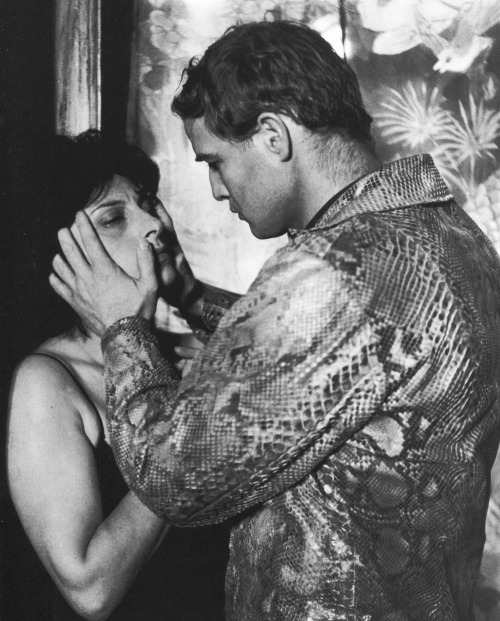

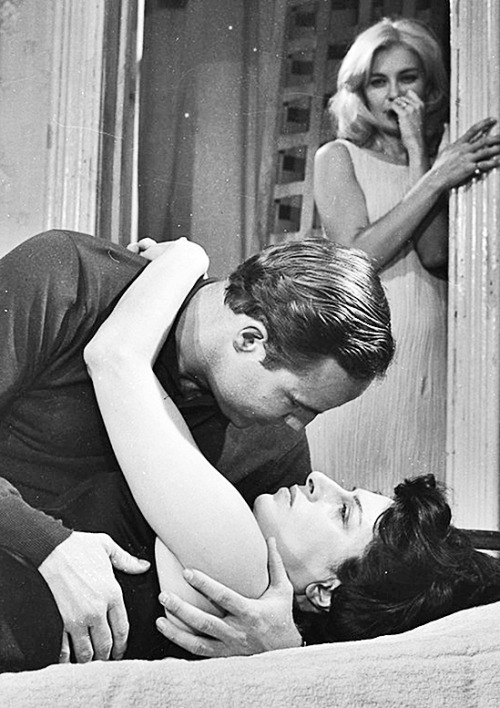

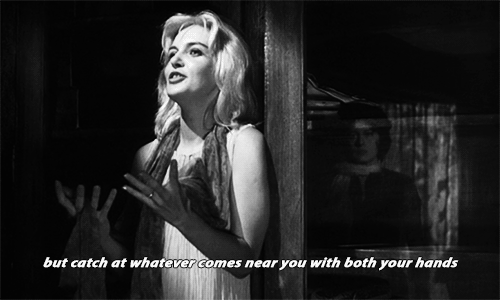
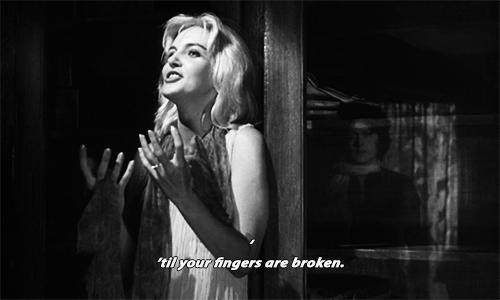
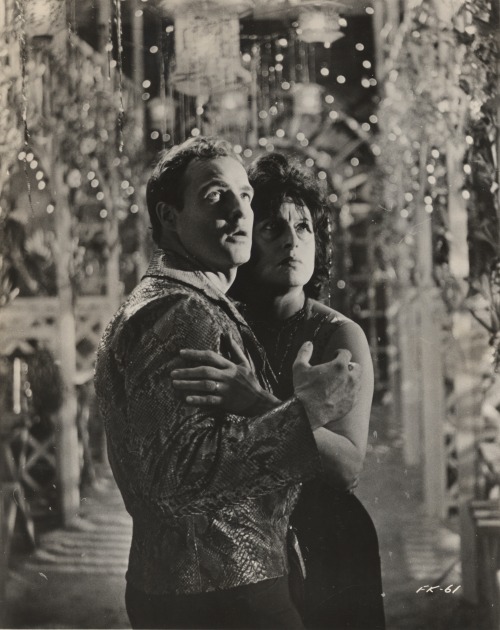
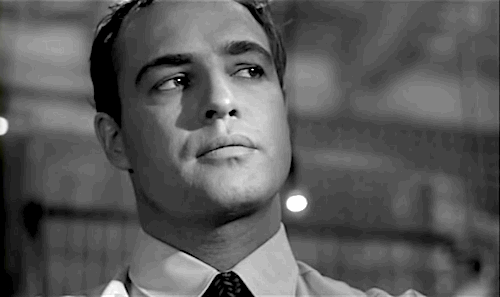



1 comment:
vidas em fuga é muito impressionante mesmo. belíssimas fotos que encontrou. eu tb comentei do filme no meu blog http://mataharie007.blogspot.com.br/2015/02/vidas-em-fuga.html
Post a Comment